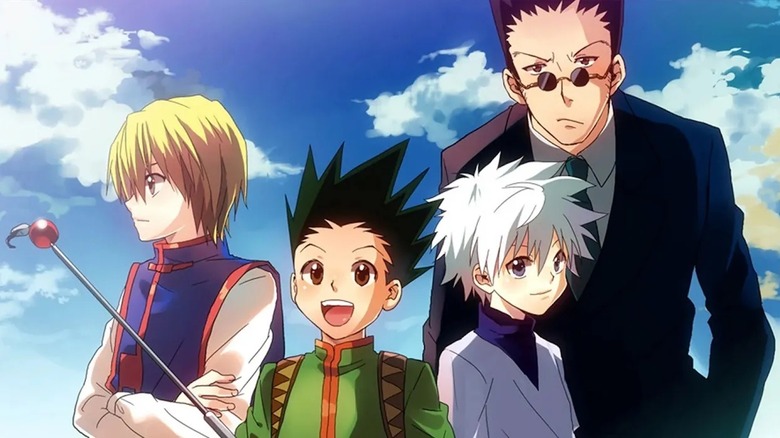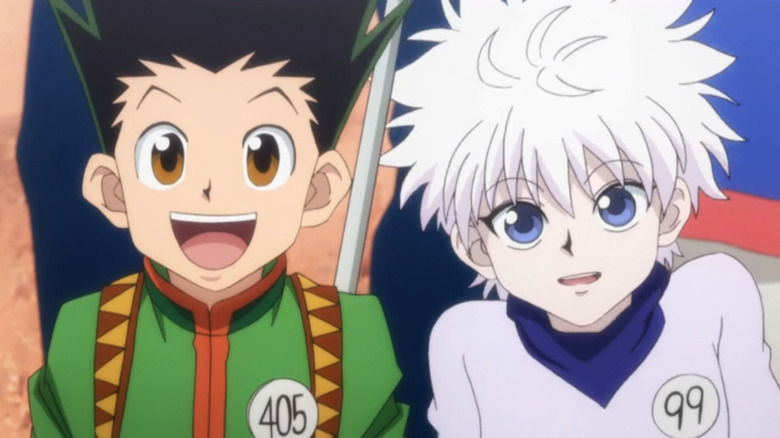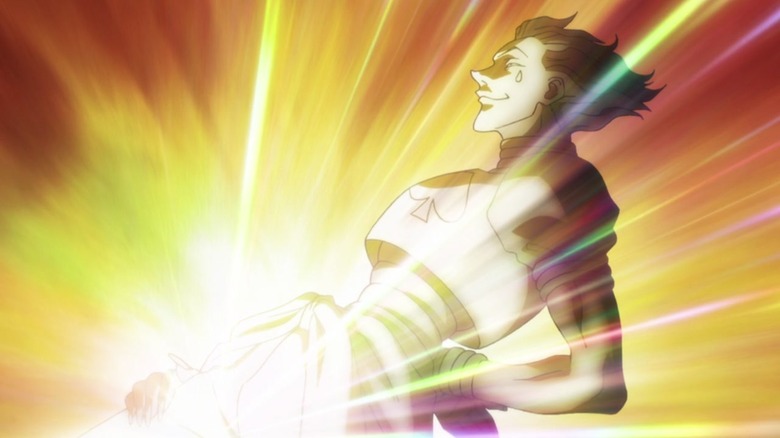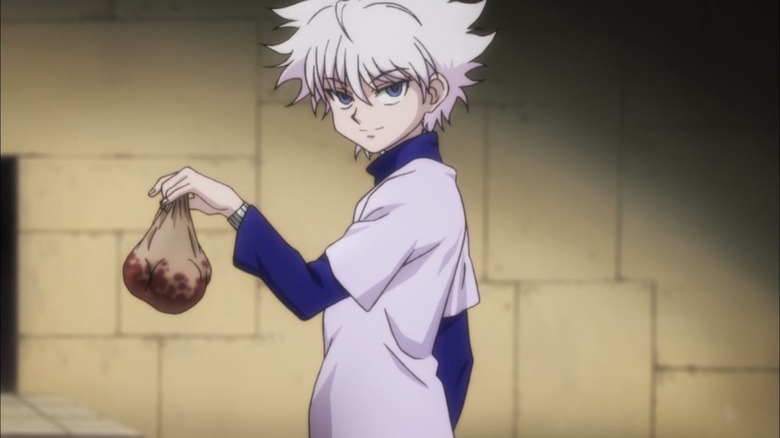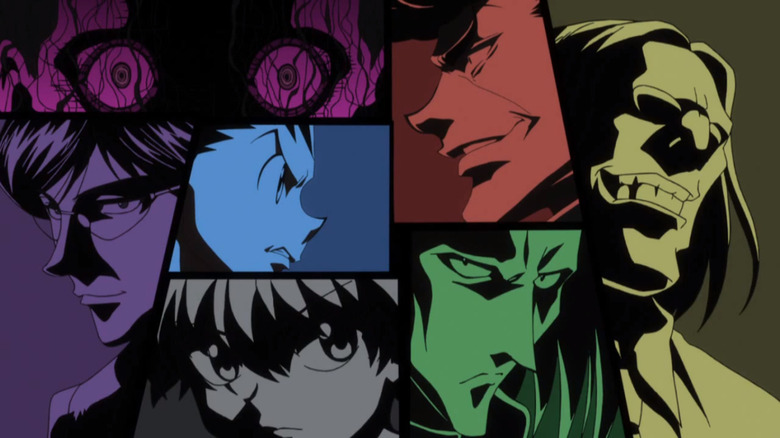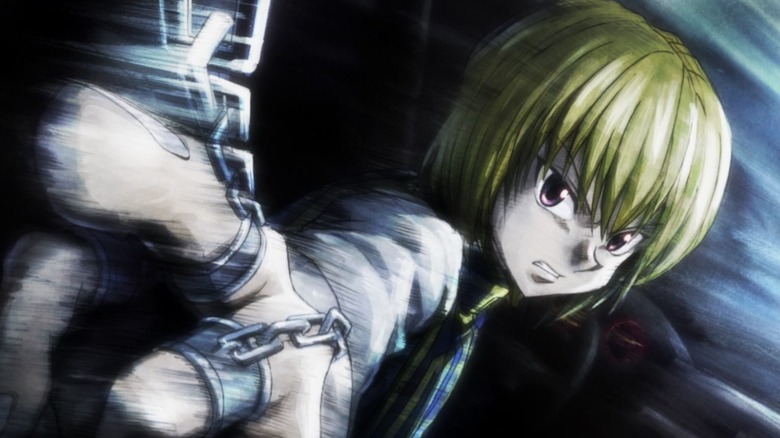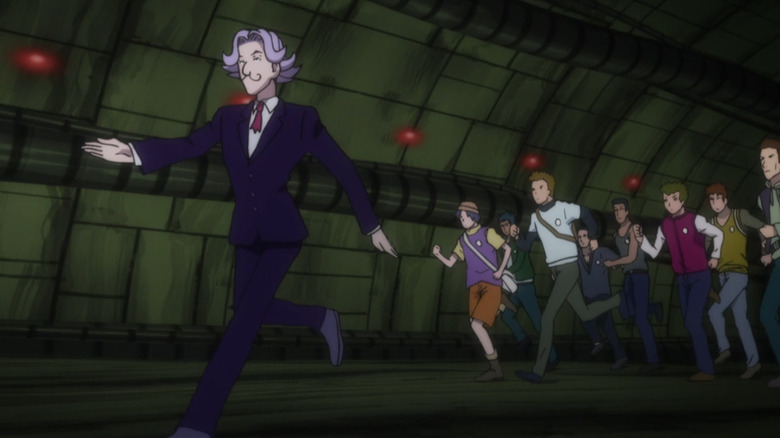Hunter X Hunter's Creator Doesn't Want The Series To Overstay Its Welcome
The most popular manga and anime in the United States hail from a Japanese magazine called Shonen Jump. Shonen Jump comics are often, but not always, long-running serial narratives about a young boy who wants to become the best at a hobby or occupation. To achieve this goal he must train long and hard, face off against rivals who inevitably become friends, and take on even greater challenges. Jump is a notoriously competitive magazine, and series that fail to hit it big immediately are either heavily reworked or canceled. Those that succeed run for dozens upon dozens of volumes, in some cases over one hundred. Which raises the question; how do you tell an effective serialized story that takes place over so many pages?
Jump comics utilize cliffhangers and breakneck pacing to keep the reader's interest, while adding and subtracting characters from the main cast based on frequent popularity polls. But the most successful ones tell a wide variety of stories, rather than repeat the same beats again and again. "One Piece" is broken into arcs that are entertaining by themselves, but connect together into an epic narrative. "Jojo's Bizarre Adventure" jumps through time to tell the tales of successive members of the Jostar family. Finally you have Yoshihiro Togashi's "Hunter x Hunter," which began serialization in 1998. Despite surface-level similarities to other comics from its generation, it may just be one of the riskiest series in the history of the magazine.
Hunting x hunting
"Hunter x Hunter" is a story about a young boy named Gon living in a world of monsters and mystery. One day, Gon decides to leave his adopted family behind in order to take the Hunter Exam, a grueling test that earns you privileges as a monster slayer and mercenary if you succeed. Gon's true goal is to find his biological father, Ging, who is a Hunter himself. En route to the exam he meets the responsible doctor Leorio as well as the vengeful Kurapika. He becomes especially fast friends with Killua, a young descendant of the terrifying Zoldyck clan of assassins. Finally, he encounters the dangerous Hisoka, who spares Gon only because he sees his potential to one day grow into somebody worth killing.
The individual pieces of "Hunter x Hunter" are similar to a big, mainstream Shonen Jump hit like "Naruto." Where "Hunter x Hunter" differs is in its willingness to abruptly change the game board. The first arc, in which Gon undergoes the various challenges of the Hunter Exam, is influential enough. The second arc is a classic tournament akin to "Dragon Ball." But then the third section takes an unexpected swerve and becomes a hardboiled crime thriller, blurring the line between good and evil. The fourth transports the cast to an online game world with its own set of challenges. The fifth is a fully fledged war epic that pushes its central characters beyond the conventions of Shonen Jump into genuinely tragic and horrifying territory.
Nonstop x rollercoaster
This approach comes with advantages and disadvantages. "Hunter x Hunter" lacks the stellar worldbuilding that makes "One Piece" a classic. Its constant genre shifts are less natural extensions of what came before than they are authorial fiat. But then, that's exactly what makes "Hunter x Hunter" so interesting. The reader never knows exactly where Togashi is going to take them, except that it will be fresh and unlike anything they've seen before. At the same time, Togashi reinvents characters within the new status quo. Leorio might become a politician, or Hisoka a temporary ally. Stories within the world of "Hunter x Hunter" are limited only by Togashi's imagination and drawing capabilities.
All of this is possible only because Togashi built a rock-solid foundation for his ever-changing comic. The six-point Nen system determines all potential combat specialties within the world of "Hunter x Hunter," whether the story happens to be in the midst of the Yorknew arc or the Chimera Ant arc. Sticky "bungee gum," life-or-death board games, and even vacuum cleaners all fall within this rubric. Battles in "Hunter x Hunter" also tend to resolve in less predictable ways than typical for Shonen Jump fare. Logic puzzles and elaborate rule-based duels are as common as straight-up brawls. Togashi loves having powerful but tiny characters like Gon and Killua go up against much stronger and more experienced foes, with win conditions that are sometimes just "escape the room" or "hit your enemy once."
Expiration x date
As you'd expect from a series that shifts tone and genre based on the artist's preferences, the imaginative powers and challenges of "Hunter x Hunter" reflect Togashi's unwillingness to settle. "As a reader of Jump myself," he says in a fan-translated interview, "I also remember having thought, 'shouldn't this manga have just ended here?' and feeling pissed when it went on and on." Yoshihiro Togashi himself has a personal history with drawing comics beyond their expiration date. His first hit was "Yu Yu Hakusho," the story of a young delinquent who fights spirits together with his friends. While the series takes fewer risks than "Hunter x Hunter," it has its share of fantastic moments and was adapted into an anime featuring some of the medium's greatest young talents at that time.
But according to another interview recorded after "Yu Yu Hakusho" finished, Togashi found himself exhausted and deeply unsatisfied part way through drawing the series. Taking time to rest instead of drawing comics decreased the quality and quantity of his output. Pushing himself harder to make up the difference destroyed his body. When Togashi proposed new directions and storylines for the characters that would satisfy him, Shonen Jump refused. His only option was to repeat the formula he had established in earlier volumes at a lower standard than he could bear.
Second x chance
Togashi drew much of the final arc of "Yuyu Hakusho" all by himself, sometimes at the last minute and skirting major deadlines. The results were noticeably rougher and less professional than the standard set during the comic's early days of success. Readers criticized the sketchy quality of the character art and backgrounds in fan letters. Togashi was perversely satisfied. If the final stretch of the series was a failure, it would at least be his failure alone. "If I ever manage to have a long serialization in Jump," he says, "I will end it on my own terms ... I ended YYH because of my own selfishness."
With "Yuyu Hakusho" in the back of one's mind, the structure of "Hunter x Hunter" begins to make sense. By switching genres and characters on the fly, Togashi is able to tell new stories without having to repeat himself. Characters like Gon and Killua surprise the reader in ways that the heroes of "Yuyu Hakusho" were never allowed to do. The Nen system allows for a wide variety of challenges that the relatively constrained world of "Yu Yu Hakusho" could not support. While fans continue to profess love and respect for Togashi's earlier achievements, "Hunter x Hunter" represents the full flowering of his creative achievements in the world's most popular comic magazine.
This x position
Despite Togashi's best efforts, the past few years of "Hunter x Hunter" have been as challenging, if not more so, than his experiences working on "Yu Yu Hakusho." The comic has been on hiatus for years, with chapters dribbling out at a glacially slow pace. In a statement published this July, Togashi spoke up about the health problems that have made drawing so time-consuming and painful for him. "I was unable to sit in a chair for two years, which made me unable to draw," he says. "It takes 3-5 times longer for me to do everyday movements." His self-portrait, drawn with a funny dog's face, is lying with his head on a pillow and a tablet standing on his lap. "Currently, I can only draw in this position."
Drawing manga is a famously difficult and time-consuming job. Togashi's fellow artist Eiichiro Oda, the creator of "One Piece," claims to sleep just three hours a day. Legendary comics artist Shigeru Mizuki would point to his own contemporaries, like Osamu Tezuka, who died in their 60s. "I sleep nine hours a day and look at me now," he said in an interview. "Everyone else is dead!" (Mizuki lived to be 93 years old.) Despite the sheer amount of work it takes to produce comics on a weekly or even monthly basis, fans regularly complain when artists go on hiatus. Togashi's fans are no exception to this rule.
Never x settle
Despite the long gaps between chapters, Shonen Jump has continued to publish "Hunter x Hunter." Togashi drew the series at his own pace for many years, persevering through debilitating pain to maintain creative control over as much of the production as possible. At the end of last August, though, he announced that he "has decided to increase his staff" by hiring additional assistants. It may be that Shonen Jump has finally become impatient with him; I find it far more likely that Togashi worries he may not be able to finish "Hunter x Hunter" in his lifetime.
Togashi said in the first interview quoted that "from my perspective as a writer, there are still many things in it left that I want to write, that I would enjoy writing." These are not the words of a man who has given up. Despite the challenges Togashi has faced throughout his career, he has always refused to settle. He believed so firmly in the integrity of "Yu Yu Hakusho" that he murdered it with his own hands rather than run it into the ground. Those same hands now pass "Hunter x Hunter" into the care of those he trusts, which I imagine is a great personal sacrifice for him. But just like the fiendish tricksters of his stories, Togashi has always played for keeps. All his fans can do is keep up.
